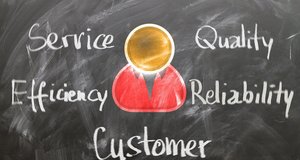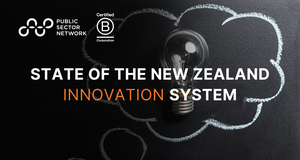Data and Analytics are important and rapidly developing business functions that are being leveraged by increasing numbers of both private and public sector organisations around the world. In the public sector government agencies and departments are now taking the opportunity to harness contextual real-time information into their decision-making processes.
Policy evaluations, education, healthcare, or, as we’ve seen recently, citizen tracking to help monitor and combat the effects of COVID-19 are all enabled by the use of data and analytics that glean new levels of insight.
By now most, if not all of us, know that data is king in the digital economy. In a public sector setting it enables informed decision making, faster incident and emergency response, efficiency gains, cost reductions and ultimately allows government departments to improve the lives of citizens.
While the public sector recognises data as a strategic asset, many Agencies and Departments; mired by legacy systems, data security and privacy concerns, as well as inaccurate and incomplete records, struggle to make this a reality.
Knowing how to integrate, fully leverage, and utilise a strong data platform as a foundation for future data, analytics and AI capabilities is key in overcoming this hurdle, and in delivering operational objectives.
To help streamline this processes we’ve rounded up five top tips to help your department build a citizen-centric data platform and analytics strategy. The aim of this post isn’t to get into the technical nitty-gritty, but more an exploration of the big picture strategies that can serve as a jumping off point for more indepth conversations.
Tip One: Determine Needs and Outcomes Before Investing in Infrastructure
This seems like a no-brainer, but do you really understand your data? Or do you just know that data and analytics are important and that your department has lots of data you should be doing something with, but with no specific challenge to target or goal in mind?
If you answered in the affirmative to the second option you’re not alone! Below are a few basic questions to ask yourself to help focus your data platform selection and future analytics strategy.
- What are your current challenges?
- What do you wish you could do?
- Do you have big data?
- What do you want to do with it?
- Does it meet your security needs?
- Can you automate it?
- How will you do continuous integration?
- Who are your users?
- Are they equipped with the right knowledge and skills?
Tip Two: Roadmap Your Long-Term Data Journey
Once you’ve determined goals, priorities and assessed challenges, capacity and capability requirements you can start building.
Organisations understand the opportunities of data, but often becoming more data-driven is easier said than done – especially in the public sector space where decades worth of data collected and stored in legacy systems within operational silos add layers of complexity.
Moving towards a more data-driven culture is certainly attainable, and it starts with a Data Roadmap. A modern and comprehensive Data Strategy addresses more than the data; it is a roadmap that defines People, Process, and Technology and considers:
- What employees need so that they are empowered to use the data
- Processes that ensure data is accessible, clean and of high quality
- Technology that will enable storage, sharing and analysis
Tip Three: Invest in the Right Infrastructure for your Needs
When considering the technology that your data and analytics platform will sit on there is a huge range of choice. And while we can’t tell you what platform is best, what we can do is provide you with some tips and arm you with a few important questions to look at when making your selection.
- Do you have the technical capacity and skills to support an on-prem data warehouse? Or would a cloud-based or hybrid approach suit your department better?
- Do you need a ‘big data’ platform that supports terabyte upon terabyte of fast moving data that requires scalable streaming solutions? Or will a simplified, scalable database technology do?
- Is there a standard integration tool to get the data from source systems into the central repository? Will this layer of the architecture be leveraged for business logic so the data is ready to be used?
- How will you provide or provision access to the data? Will IT create reports, or will you enable self-service? Who is using the data?
- What about security? Consider setting up a scalable security infrastructure to automate authentication (access) and authorisation (visibility) processes.
All of these considerations, along with a host of others go into an overall data platform architecture. The more of these that are considered and answered earlier on the more effective your platform will be.
Tip Four: People and Culture are Twice as Important as Tools
Any successful technology transformation hinges on having the right organisational elements in place – and this relies on so much more that a shiny new data warehouse or piece of cutting-edge tech.
A surprising number of organisations – both public and private – make the mistake of procuring new technologies without first having the right talent, skill capabilities and organisational culture in place to support effective implementation and transformation.
In the public space, with less risk appetite and increased scrutiny, not forgetting or ‘half arsing’ this piece of the puzzle is crucial.
Having a clear, united vision and data-centric culture can accelerate the application of analytics, amplify results and steer your organisation away from risky decision making.
Tip Five: Democratise Data for Increased Usability and Insight
You’ve built a solid data plan, invested strategically, created the right culture and prioritised talent.
There’s one more crucial step before you can begin gleaning tangible insight from your data though, and that’s democratisation of data.
Simply put data democratisation means that everybody has access to data and there are no gatekeepers that create a bottleneck at the gateway to the data. It requires that we accompany the access with an easy way for people to understand the data so that they can use it to expedite decision-making and uncover opportunities for the organisation.
While data security risks accompany the democratisation of data, with a comprehensive governance structure and data-ready culture, democratisation enables employees with diverse expertise to easily, securely and quickly access data to identify and action critical organisational insights. When you allow data access to any tier of your company, it empowers individuals at all levels of ownership and responsibility to use the data in their decision making.
For thousands of free government insights, whitepapers and exclusive interviews with public sector leaders register for the free Public Sector Network Content Portal.





















